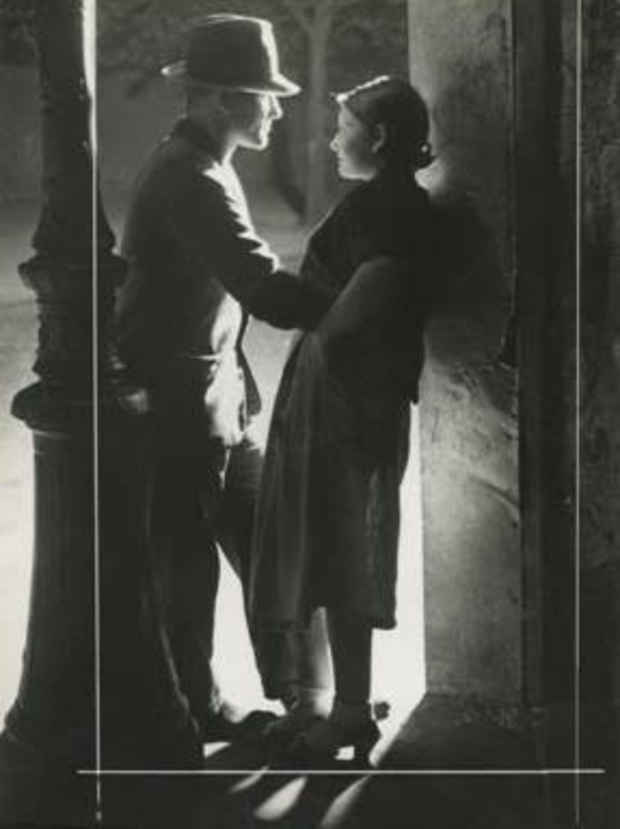Brassaï “Brassaï & Henry Miller’s Paris”
Howard Greenberg Gallery

[Image: Brassaï "Paris (from Henry Miller's Quiet Days in Clichy)" c. 1930s, printed 1950s. 9 1/4 x 7 in. © Gilberte Brassaï, courtesy Howard Greenberg Gallery]
This event has ended.
A unique set of photographs of Paris in the 1930s by Brassaï will be shown at Howard Greenberg Gallery from September 10–October 24, 2015. On view for the first time in New York, Brassaï and Henry Miller’s Paris is an exhibition of the 27 Brassaï prints used to illustrate the first edition of Miller’s novella Quiet Days in Clichy. Published in 1956, the novella is based on Miller’s rousing experiences as a struggling writer in Paris. The exhibition will open with a reception on Wednesday, September 9 from 6-8 p.m.
When Brassaï moved to Paris in 1924, where he remained for the rest of his life, he became friendly with a group of bohemians, artists, and expatriates. Inspired by the work of fellow Hungarian André Kertész, he began to explore Paris with his camera in 1929. Brassaï became legendary for his exotic nocturnal views of the city and its residents. Henry Miller, notorious for his racy and groundbreaking prose, arrived in Paris in 1930, and shared Brassaï’s passion for the street life of the city.
The Brassaï prints on view at Howard Greenberg Gallery include such intimate and clandestine scenes as a man leaning against a lamp post drawing a woman towards him, a window full of mannequins clad in lingerie, shadowy streets and dark byways, and a couple at a bar where the beautiful woman gazes impassively as the man ogles her. The prints are distinct in that they show the crop marks needed to illustrate the tall, narrow Miller novella. Many of the iconic images in the exhibition were published in earlier books by Brassaï’ including Paris de Nuit (1933) and Voluptés de Paris (1935), earning him the nickname “the eye of Paris” from Miller. In 1975, Brassaï published the biography Henry Miller: The Paris Years, about their years in the City of Light.
Brassaï (1899-1984) was born Gyula Halász in Brassó, Transylvania (then part of Hungary, later Romania). He was trained as an artist and after emigrating to Paris, worked as a journalist. Initially taking photographs to accompany his articles, he became enchanted with the medium. He changed his name to Brassaï, which means “from Brassó,” and within a few years, became one of France’s most famous photographers—a unique chronicler of Paris in the 1920s and 30s. Aside from an interlude during World War II, Brassaï worked as a freelance photographer and writer for publications including Minotaure, Verve, Coronet, Picture Post, and Harper’s Bazaar. Through the late 1960s, he continued working with Harper’s Bazaar, traveling extensively on assignment. Many of his photographs made in England, Spain, the United States, and Brazil were printed in various publications during his lifetime, but are virtually unknown today.
Brassaï, who influenced generations of photographers to come, was awarded the first Grand Prix National de la Photographie in Paris (1978), the Chevalier des Arts et des Lettres (1974), and the Chevlier de l’Ordre de la Legion d’ Honneur (1976). At the time of his death in 1984, Brassaï had published 17 books and hundreds of articles, and had exhibited his photographs, sculpture, and drawings. His film Tant qu’il aura des betes (1955) won the prize for Most Original Film at the Cannes Film Festival in 1956.
Media
Schedule
from September 10, 2015 to October 24, 2015
Opening Reception on 2015-09-09 from 18:00 to 20:00